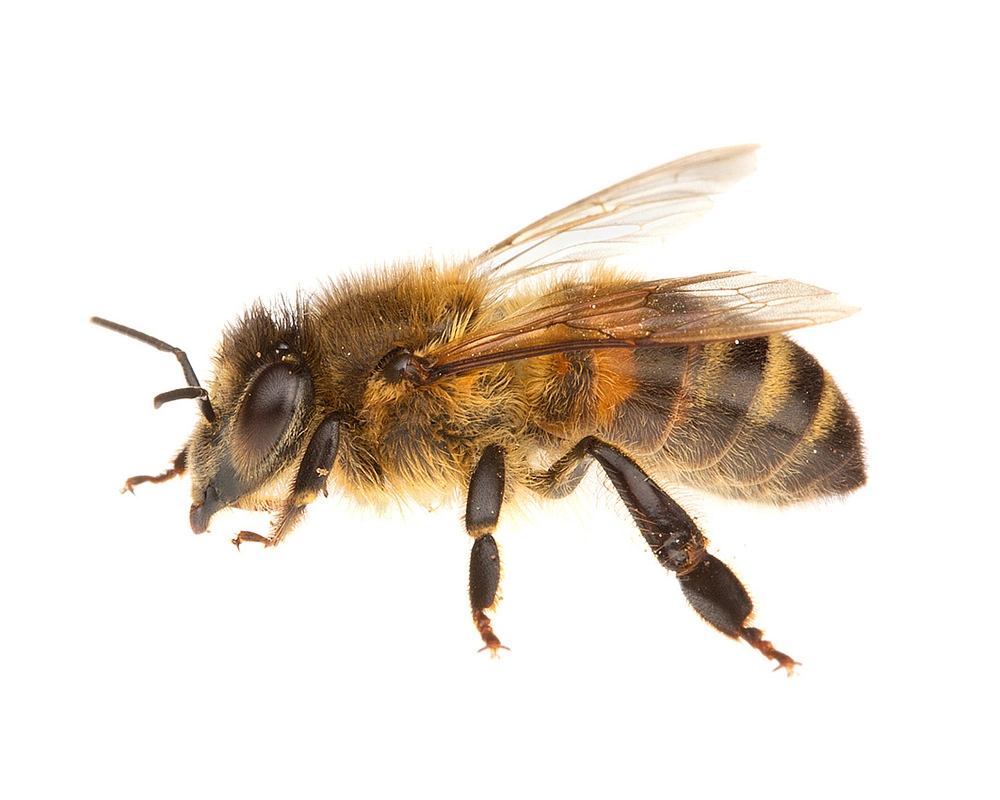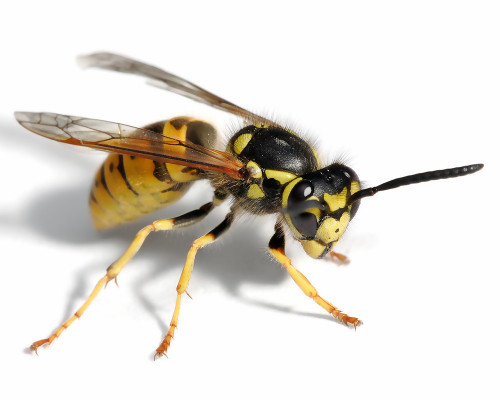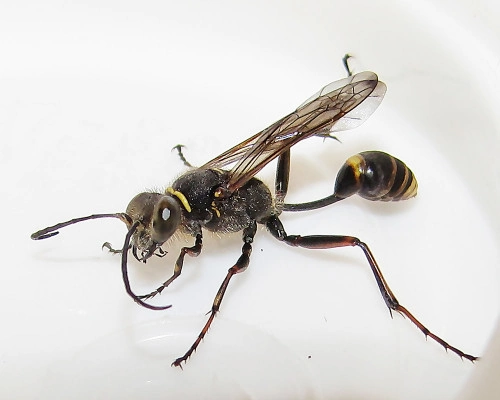Bees & Wasps In Humboldt County
Honey Bees
A Honey bee measures up to 5/8 of an inch in size. Their hair is dense and ranges in color from golden brown to black, with a striped abdomen. Honey bees are not naturally confrontational. They will, however, sting if their colony is threatened, and die a gruesome death as a result.
Honey bees like to nest in hollow trees, wall voids, and within attics. They can cause serious damage to homes with the sticky residue of their honey. Not to mention the foul odor of decomposing honey, nesting materials and droppings that may accumulate inside.

Social Wasps

Unlike bees, when a wasp stings you, they will not die. Social wasps are very protective of their nests and will defend with painful stings.
Yellow jackets usually build their nests below ground. Bald-faced hornets prefer to build their nests in trees and on the sides of buildings. Paper wasps build flat open nest which are usually found on the underside of eaves.
Solitary Wasps
Although solitary wasps have stingers, they usually are not aggressive. These species of wasps will sting only when disturbed.
Mud Daubers are the most noticeable solitary wasp. They construct their nests on the side of homes and on the underside of eaves. This makes detecting their presence fairly straight-forward. Mud Dauber homes are made using mud mixed with other materials.

